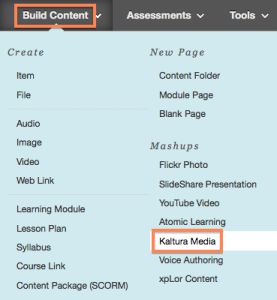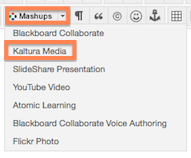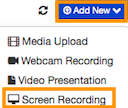Nancy Beardall teaches dance therapy courses for the Expressive Therapies program. This September, she taught her Body/Movement Observation and Assessment course online for the first time. To prepare for this new experience, Nancy worked with an eLIS instructional designer over several months to reimagine what her face-to-face content would look like online.
teaches dance therapy courses for the Expressive Therapies program. This September, she taught her Body/Movement Observation and Assessment course online for the first time. To prepare for this new experience, Nancy worked with an eLIS instructional designer over several months to reimagine what her face-to-face content would look like online.
During the design process and while teaching online, Nancy had several realizations. As a dance therapist there’s an intuitive sense that informs her teaching. When teaching online, there’s also an intuitive sense to using and smoothly integrating the technology, but she didn’t have that technology vocabulary to guide her. This created a feeling of discombobulation of how the two would fit together. To overcome her obstacles, Nancy continued working through her content with an instructional designer and attended eLIS’ Summer Technology Institute, The Institute allowed her to use an inquiry model to re-examine her content with other faculty while at the same time exploring technologies and how they might ‘fit’ her content.
One of Nancy successful blendings of content and technology was the students’ final presentations. Students recorded and analyzed their application of specific movement theories. Their videos were uploaded to a course media gallery using Kaltura Video in myLesley. Nancy then scheduled synchronous online meetings in Lync. Each student had ten minutes to present their work and five minutes for follow up. Students reviewed each other’s videos in advance of the online meetings and posted feedback to the students within a few days after the meeting. Nancy found that the wait time between the presentation and the responses was an unexpected benefit. Students could review presentations at their own speed as often as they needed and they had time to think and process what they had experienced. She found their responses to be much more thoughtful as they balanced their initial reactions against longer reflections when they wrote their comments. They were simply “terrific.”
Nancy’s second realization was that she probably talked too much in her face-to-face classes. She wasn’t able to do that online. As a result was that the students did more of the talking and presenting while she listened and guided. Nancy liked the result of hearing her students as they worked through the content so much that she is now trying to shift the balance in her on-campus classes and talk less allowing her experience teaching online to inform her face-to-face teaching practice.
If Nancy had one piece of advice for faculty new to teaching online, it would be to realize that “it takes a village” to learn. You won’t be doing this by yourself. Work with the eLIS designers, other faculty and even your students to learn the design, teaching and technology skills you will need. It will be an iterative process. There will be frustrations, but there will also be successes and unexpected benefits. The final result probably won’t be what you originally envisioned. With time, patience and a willingness to adapt, it can be much better!






